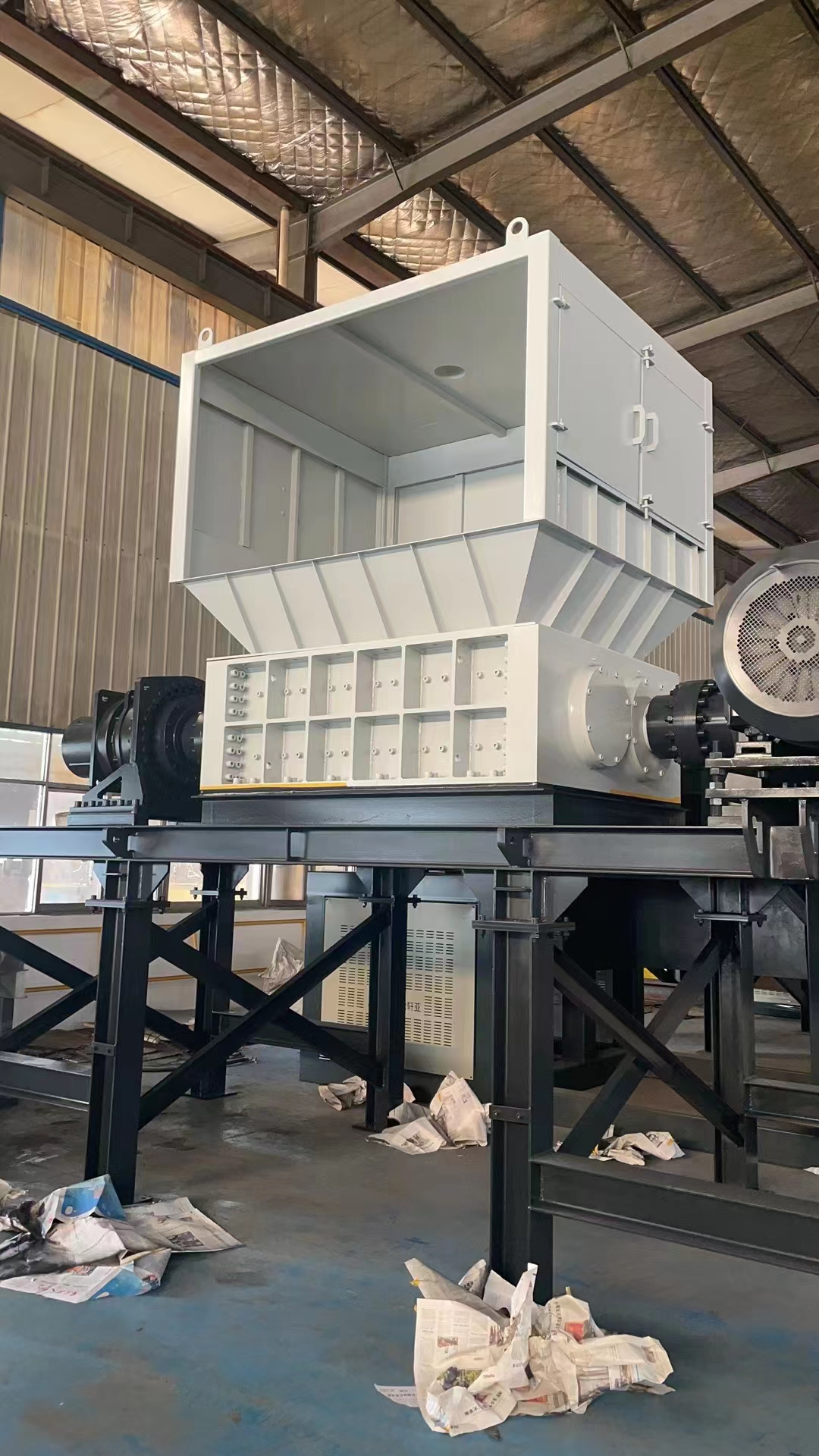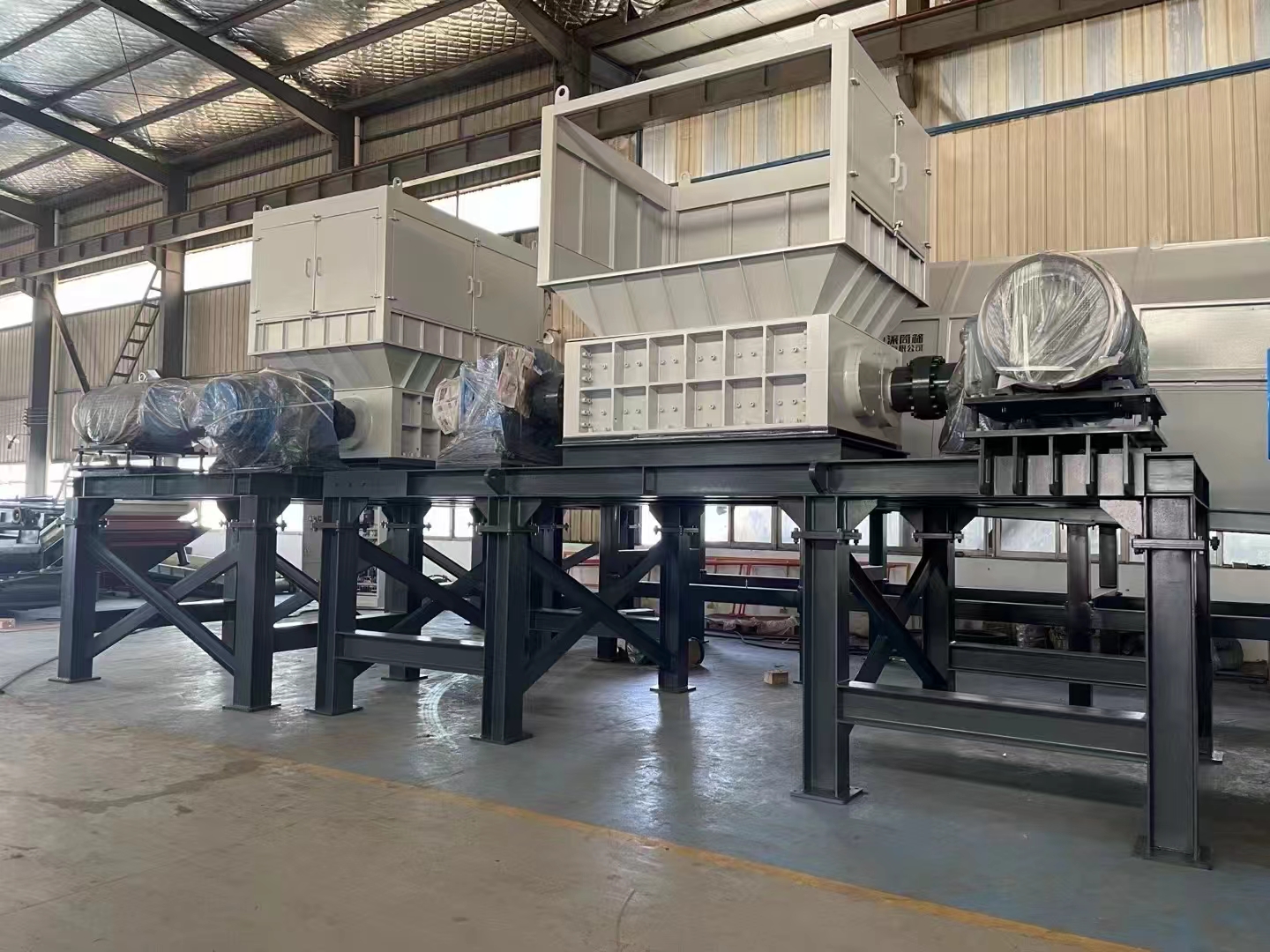Car shredder introduce
A car shredder is a large industrial machine used to break down whole vehicles or large pieces of scrap metal into smaller, more manageable pieces. This process is a crucial step in the recycling of automobiles and other vehicles. Here’s an introduction to how car shredders work and their importance in the recycling industry:

How Car Shredders Work
Feeding: Whole cars or large pieces of scrap metal are fed into the shredder through a large hopper. The hopper is assembled after being processed by CNC hydraulic shearing machine. It is strong and can be quickly disassembled.The shredder is often equipped with a powerful magnet to separate ferrous (iron-based) materials from non-ferrous materials before the shredding process begins.
Shredding: Inside the shredder, there is a large rotating drum (or rotor) equipped with heavy-duty hammers (also known as "blow bars") that rotate at high speeds. As the material enters the shredder, the hammers strike and tear the metal apart, breaking it down into smaller fragments.
Sorting: After the shredding process, the resulting shredded material is separated into different categories. Typically, this includes:
- Ferrous Fractions (Shred): The main product, consisting of small pieces of iron and steel.
- Non-Ferrous Fractions: Copper, aluminum, and other non-ferrous metals.
- Fluff (Shredder Residue): Light, non-metallic materials such as plastics, rubber, glass, and textiles.
Post-Shredding Processing: The separated materials are further processed to remove contaminants and increase the purity of the metals. For example, magnetic separators can be used to separate ferrous from non-ferrous metals, while air classifiers or eddy current separators can be used to separate non-ferrous metals from fluff.
Importance of Car Shredders
- Efficient Recycling: Car shredders allow for the efficient processing of large volumes of scrap metal, making it easier and faster to recycle cars and other vehicles.
- Resource Recovery: By separating metals and other materials, car shredders facilitate the recovery of valuable resources that can be reused in new products.
- Environmental Benefits: Recycling reduces the need for mining virgin materials, which conserves natural resources and reduces energy consumption and greenhouse gas emissions.
- Waste Reduction: Shredding helps to reduce the volume of waste going to landfills and ensures that materials are properly managed.
Recent Developments and Innovations
- Suppression of Dioxin Generation: Methods have been developed to treat car shredder dust and prevent the generation of dioxin, a harmful byproduct.
- Volume Reduction: Packing devices have been introduced to efficiently compress car shredder dust, reducing its volume and making it easier to handle and transport.
- Polyurethane Foam and Fabric Granules Extraction: Toyota has developed a technology to sort and extract polyurethane foam and fabric granules from shredded car residues, which can then be reused in the manufacturing of soundproof products.
- High-Throughput Machines: Advanced car shredders can process a significant amount of material in a short time, such as the machine capable of shredding 450 cars per hour, which is used in a facility in Newport, UK.
Applications
- Metal Recycling: Shredded metal is often used as raw material in the steelmaking process.
- Component Recovery: Non-metallic components recovered from the shredding process can be repurposed or used in the production of new materials.
Energy Recovery: Some non-metallic materials can be used as fuel in cement kilns or other industrial processes.

-
 Trommel screenTrommel screen, also known as drum screens, are widely used in various industries for sorting and separating materials.Get Quote
Trommel screenTrommel screen, also known as drum screens, are widely used in various industries for sorting and separating materials.Get Quote -
 Crop straw double shaft shreddApplications:Biomass Energy Production: Shredded straw can be used as a feedstock for bioenergy plants to produce electricity or heat.Livestock Feed: Reduced-si...Get Quote
Crop straw double shaft shreddApplications:Biomass Energy Production: Shredded straw can be used as a feedstock for bioenergy plants to produce electricity or heat.Livestock Feed: Reduced-si...Get Quote -
 Zhongcheng Air Drum SeparatorAir drum separators effectively separate lightweight materials (e.g., plastics, paper) from heavier materials (e.g., metals, glass). This high efficiency is cru...Get Quote
Zhongcheng Air Drum SeparatorAir drum separators effectively separate lightweight materials (e.g., plastics, paper) from heavier materials (e.g., metals, glass). This high efficiency is cru...Get Quote
-
2024-06-05Can the Angle of the Ballistic Separator Be Adjusted?Ballistic separator is a type of mechanical sorting device used primarily in the recycling industry to separate materials based on their physical properties. It...
-
2024-05-18Spring Cone CrusherSpring cone crushers are generally used in the medium and fine crushing links of mine crushing, and are mainly used in the secondary crushing and tertiary crush...
-
2024-05-20Mobile Impact Crusher PlantThe mobile impact crusher plant is a kind of crushing equipment based on a mobile platform. It uses an impact crusher as the host machine and is usually equippe...
-
2024-07-10msw trommel screen for waste recycling machineThis equipment is suitable for the particle classification process in all walks of life:The equipment is simple, easy to operate,and can be operated with a larg...
-
2024-04-25Recycling Finger ScreensFinger screen is a type of screening equipment used to separate materials based on size. Unlike traditional screens, finger screens consist of a series of paral...



